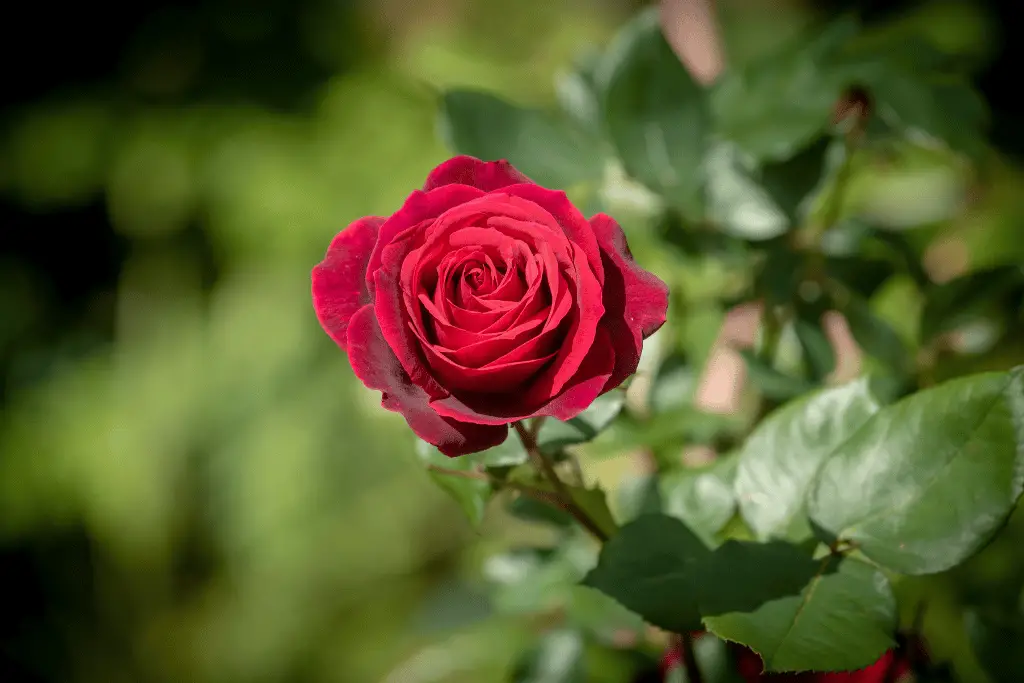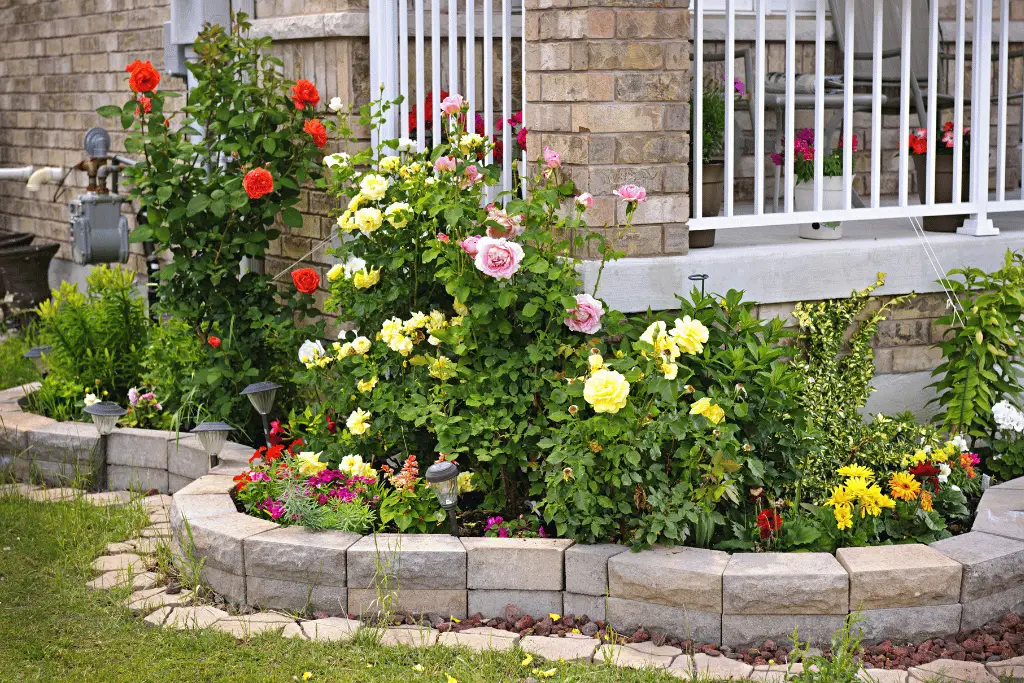
When is the best time to transplant roses is the most asked question. Beginning the process of transplanting roses is not only a horticultural endeavour; rather, it is a complex dance with nature, a symphony of time, care, and the pulsating life force that is contained within each delicate petal. In the course of this investigation, we will delve into the specifics of when the optimal time is to transplant roses at their root. Your hands, directed by your understanding, will compose a flawless transplanting symphony, and this voyage into the world of roses will be a harmonious one. The seasons will determine the rhythm, and your hands will carry out the transplanting. Rose transplantation is an art form that goes beyond the simple act of moving a plant from one location to another. This requires having a grasp of the complicated dance that takes place between the roots, the soil, and the shifting of the seasons. Roses, which are renowned for their stunning beauty and fragrant flowers, react to the process of transplanting with a delicate sensitivity at the start. As a result, the timing of this endeavour becomes an extremely important component in guaranteeing the health, vigour, and eventual blooming of these magnificent flowers.
When Is the Best Time to Transplant Roses: Spring Awakening
Spring as the Pinnacle Moment:

As nature returns from its winter slumber, springtime is the ideal time to transplant roses because it is the most favourable time of year. During the delicate process of uprooting and replanting, the soil becomes more favourable to the process since it has been warmed by the soft caress of the sun. As a result of the season’s perfect combination of warm temperatures and increasing daylight, roses are able to adjust to their new environment in the most favourable conditions possible.
Benefits of Spring Transplantation:
- Root Establishment: Spring provides an optimal environment for the development of strong and healthy root systems. The combination of moderate temperatures and ample sunlight encourages robust root growth.
- Reduced Transplant Shock: With the active growth phase initiated in spring, roses are better equipped to overcome the transplant shock. The shock is minimized as the plant transitions seamlessly into a period of increased growth.
- Blooming Potential: Transplanting in spring sets the stage for a summer spectacle of blooms. By allowing the roses to establish themselves early in the growing season, you pave the way for a vibrant display of colors.
Preparing the Stage: Steps for Successful Spring Transplantation
Soil Preparation and Amendments:
Before the delicate process of transplanting begins, it is essential to prepare the stage. Assess the soil quality and structure in both the existing and new locations. Roses thrive in well-draining soil rich in organic matter. Incorporate compost or well-rotted manure to enhance soil fertility and structure.
Pruning Strategies:
Spring is the opportune time for pruning roses, aligning with the natural growth patterns of the plants. Remove any dead or diseased wood, and trim back excessive foliage to encourage the development of strong, new shoots.
Hydration Rituals:
Hydration is a key element in the pre-transplantation preparations. Ensure that the roses are well-watered in the days leading up to the transplant. Adequate moisture prepares the plants for the upcoming change and minimizes stress during the process.
Choosing the Right Day:
While spring provides the overall canvas, choosing the right day within this season becomes an art. Opt for a cloudy or overcast day to reduce the stress on the roses. Avoid transplanting on windy days, as the additional strain on the plants can hinder their ability to establish roots.
Basking in Summer’s Glow: Nurturing Roses in Their New Abode

As the symphony of seasons progresses, we find ourselves in the radiant embrace of summer—a season that unfolds its warmth and light, inviting roses to unfurl their petals in full splendor. In the realm of transplantation, summer introduces a new set of considerations and opportunities. Join us on this journey as we explore why summer, with its golden hues and vibrant energy, can be the perfect time to nurture roses in their new abode.
Summer Radiance: A Time of Vigorous Growth
The Sunlit Canvas of Summer:
Summer heralds a period of vigorous growth and abundant sunlight. As roses settle into their new surroundings, the extended daylight hours fuel photosynthesis, promoting lush foliage and encouraging the development of buds that will blossom into magnificent flowers.
Capitalizing on Growth Potential:
Transplanting roses in summer allows them to capitalize on the season’s growth potential. With the stress of transplantation minimized in the spring, the plants can now channel their energy into establishing strong roots and adapting to their new home.
Blooming Beauty:
Summer-transplanted roses have the opportunity to showcase their blooming beauty during the same season. The synergy of well-established roots and ample sunlight sets the stage for a breathtaking display of colors, turning your garden into a canvas of floral artistry.
Mitigating Summer Challenges: Strategies for Success
Hydration Strategies:
While summer offers favorable conditions for growth, it also presents challenges, particularly in terms of water availability. Ensure consistent and deep watering to combat the higher evaporation rates. A layer of mulch around the base of the roses helps retain soil moisture.
Protection from Heat Stress:
Roses, especially those recently transplanted, are susceptible to heat stress. Shield them from the intensity of the midday sun by transplanting on a cloudy day or in the late afternoon. Temporary shade structures can also provide protection during the initial days post-transplantation.
Monitoring and Care:
Regular monitoring is crucial during the summer months. Keep an eye on soil moisture levels, and adjust your watering schedule based on the specific needs of your roses. Prune any wilted or damaged foliage to encourage the plants to direct their energy towards healthy growth.
Fertilization Timing:
Summer-transplanted roses benefit from a well-timed fertilization schedule. Apply a balanced, slow-release fertilizer to provide the necessary nutrients for ongoing growth. However, avoid over-fertilizing, as this can lead to excessive foliage at the expense of flower production.
Autumn’s Whispers: A Symphony of Preparation and Dormancy

As the sun-soaked days of summer gradually yield to the gentle whispers of autumn, the garden undergoes a transformation. Autumn, with its crisp air and the subtle rustle of falling leaves, introduces a different cadence to the rhythm of roses. In the delicate world of transplantation, this season becomes a hidden gem, offering unique opportunities for those attuned to the needs of their beloved roses. Join us on this autumnal journey as we unravel the symphony of preparation and dormancy that makes this season a compelling time for rose transplantation.
The Prelude to Rest: Embracing Dormancy
Autumn’s Cooling Embrace:
Autumn carries the promise of cooler temperatures, signaling to roses that it’s time to prepare for dormancy. The gradual decline in daylight hours and the drop in temperatures create an environment conducive to root establishment without the demands of active above-ground growth.
Transition to Dormancy:
Transplanting roses in autumn allows them to transition smoothly into dormancy. As the foliage gradually fades and the energy shifts from above-ground growth to root development, the plants can allocate resources more efficiently, establishing a robust foundation for the coming seasons.
Reduced Transplant Shock:
With the natural progression towards dormancy, roses experience reduced transplant shock during autumn. The slowed metabolic activity and diminished water requirements ease the stress on the plants, promoting a smoother acclimatization to their new surroundings.
The Art of Preparation: Strategies for Autumn Transplantation
Timely Transplantation:
The key to successful autumn transplantation lies in timing. Aim to transplant your roses early in the season, allowing sufficient time for them to establish roots before the onset of winter. This strategic timing aligns with the natural inclination of roses to enter dormancy.
Pruning for Balance:
Autumn presents an opportune moment for pruning. Trim away any diseased or dead wood, shaping the bushes for a harmonious balance. However, refrain from heavy pruning, as this could stimulate new growth that may be vulnerable to frost.
Soil Enrichment:
Prepare the soil in both the existing and new locations by enriching it with well-rotted compost. The added organic matter enhances soil structure and fertility, providing an optimal environment for root development during the dormancy period.
Mulching for Insulation:
Apply a layer of organic mulch around the base of the transplanted roses. Mulch acts as insulation, protecting the roots from temperature fluctuations and reducing the risk of frost damage. Leave a gap around the stems to prevent moisture-related issues. In the ballet of seasons, autumn emerges as a quiet yet profound partner in the transplantation dance. As we transition from the active growth of summer to the contemplative dormancy of winter, autumn offers a moment of preparation and fortification.
Winter’s Embrace: Nurturing Roses in the Quietude

As the garden dons its winter cloak and nature retreats into a hushed embrace, roses too enter a phase of dormancy. Winter, often perceived as a season of rest, holds its own significance in the intricate timeline of rose transplantation. In this concluding act, we delve into the nuances of winter transplantation, a period marked by stillness and dormancy, and encapsulate the essence of the best times to transplant roses.
Winter Dormancy: A Time for Reflection
Embracing the Quietude:
Winter extends an invitation to roses to embrace a period of dormancy. As temperatures drop and daylight wanes, the metabolic activity of the plants slows down, allowing them to conserve energy and prepare for the awakening that lies ahead. This dormancy is a natural rhythm in the life of roses, and transplanting during this season aligns with their inherent tendencies.
Root Development in Stillness:
While the above-ground growth may pause, winter provides an opportunity for substantial root development. The quiet soil becomes a canvas for the expansion of the root system, strengthening the plant’s foundation and preparing it for the burst of growth that accompanies spring.
Reduced Transplant Stress:
Winter transplantation minimizes the risk of transplant shock. With the plant in a state of dormancy, the stress associated with uprooting and relocation is mitigated. This reduced stress allows for a smoother transition and sets the stage for a robust return to vitality when the growing season resumes.
The Gentle Touch: Strategies for Winter Transplantation
Selecting Mild Days:
Winter transplantations benefit from a selective approach to timing. Choose mild, frost-free days for the transplanting process. This avoids subjecting the roses to extreme weather conditions and ensures a gentler transition.
Preparing for Frost Protection:
As winter nights bring the potential for frost, it’s essential to prepare the transplanted roses for protection. Apply a layer of mulch around the base, covering the root zone to shield it from temperature fluctuations. Additionally, consider using frost cloth or burlap to cover the plants on especially cold nights.
Watering Considerations:
While the winter season brings reduced water requirements, it’s crucial to monitor soil moisture. Ensure that the roses receive adequate hydration, particularly in the absence of natural rainfall. Deep, infrequent watering helps prevent the soil from drying out completely.
Orchestrating the Symphony of Rose Transplantation
In the grand narrative of rose transplantation, each season contributes a distinctive note to the symphony of growth and renewal. Spring, with its promise of awakening; summer, basking in the glow of vitality; autumn, whispering tales of preparation; and winter, cradling the quiet dormancy—all play crucial roles in the lifecycle of roses. As a gardener and caretaker, understanding the nuances of each season empowers you to orchestrate this symphony with finesse. The best time to transplant roses becomes a dance with nature, a rhythm that echoes through the soil and leaves an indelible mark on the flourishing beauty of these regal blooms. So, when is the best time to transplant roses? It’s a question answered not by a singular season but by the ebb and flow of nature’s cycles. Each transplanting season is an opportunity to nurture, fortify, and witness the enduring beauty of roses as they respond to the delicate hands of care. May your journey with roses be filled with the wisdom of seasons, the patience of a gardener, and the joy of witnessing your garden flourish in response to the timeless rhythms of nature. Happy gardening!






